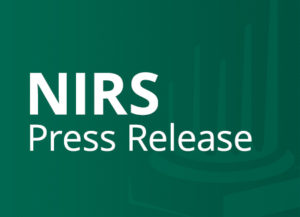New research examines the retirement benefit elections of teachers in two states when there is a choice between a pension plan or a plan that combines an individual account with a pension.
New Issue Brief Analyzes Teacher Retirement Plan Choice In Two States
Webinar on Wednesday, December 17th at 4 PM ET to Review Findings
WASHINGTON, D.C., December 17, 2014 – A new issue brief examines the retirement benefit elections of teachers in two states when new teachers have a choice between a defined (DB) pension plan or a plan that combines a defined contribution (DC) individual account with a DB pension. The analysis finds that since 2008, teachers in both states show a preference for the stand-alone DB pension. The research also indicates that the financial security provided by DB pensions helps retain experienced teachers, leads to educational productivity and provides schools with an effective workforce management tool.
The research, Teacher Retirement Plans: Case Studies in Washington and Ohio Indicate Value of Pensions, is available here. Watch a webinar here.
This new research brief from the National Institute on Retirement Security (NIRS) examines the experience in the only two states that have offered a DB-DC combination choice – Washington and Ohio – and includes three key findings:
1. The teacher retirement plan election pattern during 1997 in Washington is unique. The combined DB-DC plan offered by the state included special features and circumstances that enticed teachers to switch:
- Teachers were provided with an upfront financial payments in 1997 that encouraged the switch;
- Stock market conditions with double-digit gains in the 1980s and 1990s may have caused teachers to overestimate the future value of their DC accounts. Thus, the combined DB-DC plan appeared more attractive in 1997; and
- The state offered important features such as in-plan annuitization of a teacher’s DC account balance, so he or she would receive guaranteed lifetime income with the state reassuming the longevity risk. In fact, this ability provides teachers with a significantly larger lifetime income than available today from annuities from insurance companies.
2. Ohio had a far different outcome than Washington over the years when teachers could choose between the DB plan and the DB-DC combination plan. Between 2002-2014, 86% of new teachers opted to join the traditional DB plan and only four percent opted for the combined plan. The remaining 10% chose the DC plan, the third option available in Ohio.
3. Education policy research finds that DB pensions play a critical role in recruiting and retaining qualified, productive teachers. Thus, offering an alternative retirement plan design could have adverse effects on teacher retention and quality.
“This analysis serves as an informative tool for policymakers interested in education and retirement policy issues,” said Diane Oakley, NIRS executive director. “The research makes it clear that teachers prefer DB pensions, and that the financial security provided by pension plays a critical role in recruiting and retaining talented educators. Moreover, a wide body of research finds that teacher retention is essential for delivering high quality education. Thus, policymakers should proceed with caution when considering any changes to teacher retirement plan design.”
The research serves to clarify questions about teachers’ retirement plan preferences. While teachers in Washington initially chose the DB-DC combination plan in high numbers, further analysis suggests that financial incentives and investment market conditions tilted decisions toward the DB-DC combination. Additionally, this new issue brief is consistent with two previous NIRS studies. One study found that employees overwhelming prefer DB pensions over plans with DC accounts, and the other study reported that pensions help improve education quality while reducing turnover costs.
The National Institute on Retirement Security is a non-profit, non-partisan organization established to contribute to informed policymaking by fostering a deep understanding of the value of retirement security to employees, employers, and the economy as a whole. Located in Washington, D.C., NIRS’ diverse membership includes financial services firms, employee benefit plans, trade associations, and other retirement service providers. More information is available at www.nirsonline. Follow NIRS on Twitter @nirsresearch.
